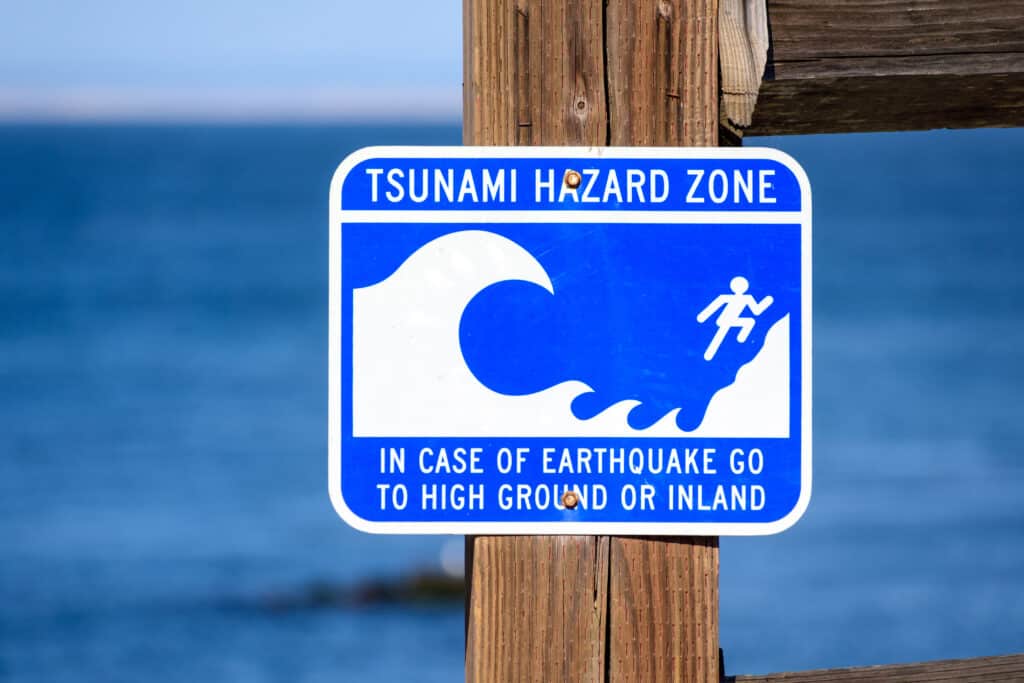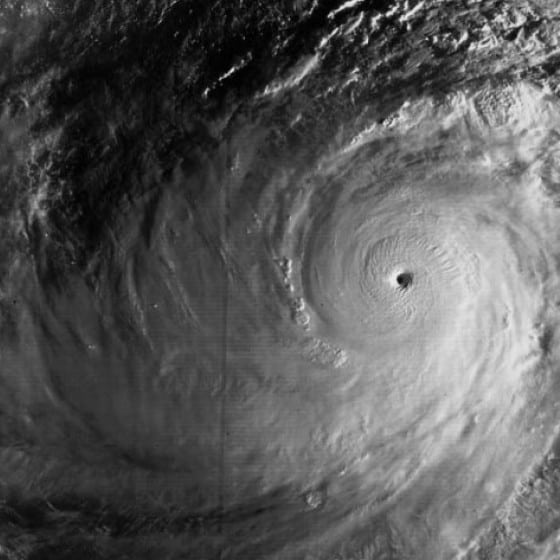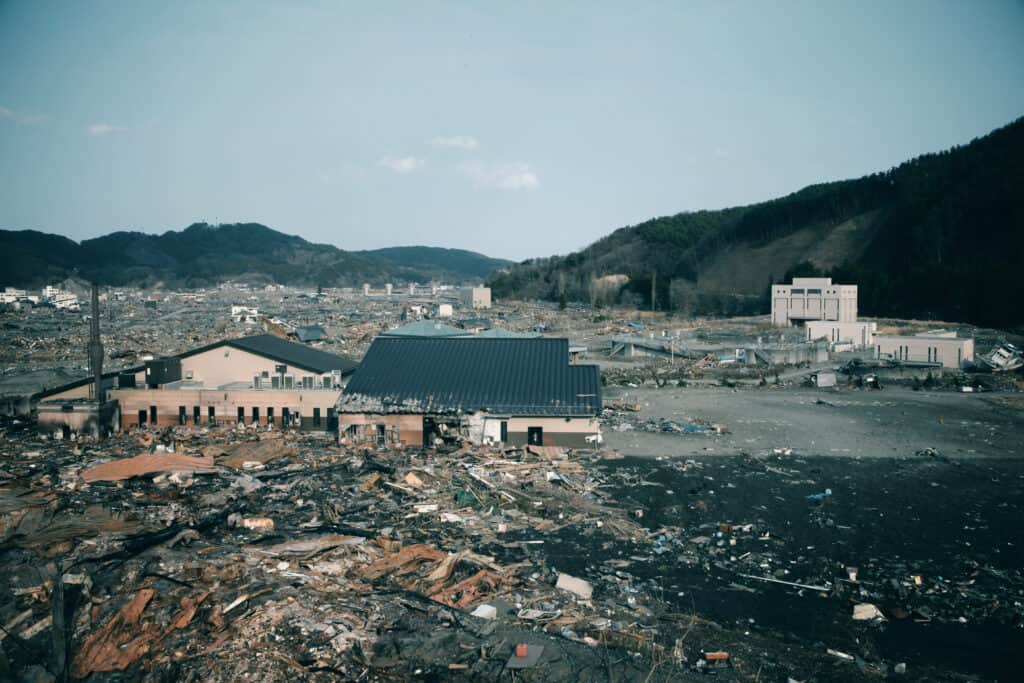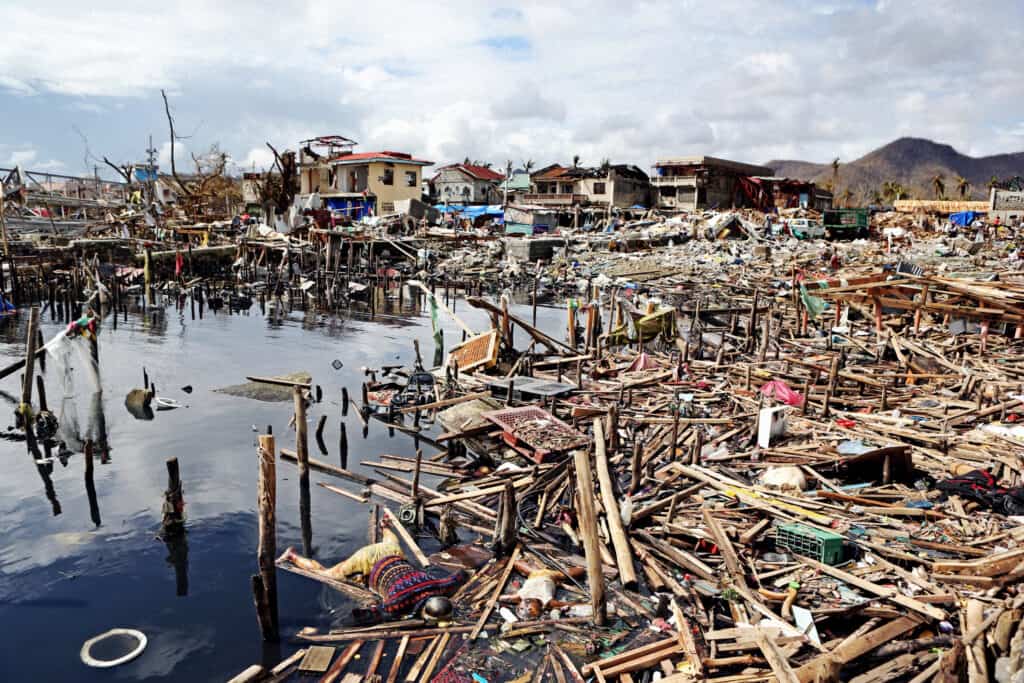Tsunamis and typhoons are both natural disasters that even have similar names, but they aren’t the same thing. Although you wouldn’t want to get caught in either of them, knowing the differences between the two is important, especially if you live in a region where either of them could occur. Today, we are going to take a look at the differences between the two, plus learn a little about each of them individually. Let’s get started!
Defining a Tsunami and a Typhoon

A tsunami is a large wave that hits a coastline, while a typhoon is a tropical storm with strong winds and rain.
©Michael Vi/Shutterstock.com
A tsunami is a series of ocean waves that are caused by large-scale disturbances such as large chunks of earth falling into water (landslides or something similar), earthquakes, or even volcanic eruptions. Once they reach the shore, the wave of a tsunami can reach enormous heights and travel at very high speeds, making them extremely dangerous to coastal communities.
A typhoon, also known as a hurricane or cyclone, is a large and powerful storm system that forms over tropical waters. These storms are known for their strong wind, rain, and storm surges, which can cause significant damage to buildings and other infrastructure, as well as communities hit by them. Typhoons are often categorized based on their strength and intensity, usually referred to as a Class or Category. The most dangerous typhoon is known as a Category 5 typhoon. If this sounds similar to a hurricane, you would be correct! A typhoon and a hurricane are both tropical cyclones, but they are named differently based on where they occur. A typhoon is a cyclone that forms in the western Pacific Ocean, while a hurricane forms in the Atlantic Ocean or the eastern Pacific Ocean. Same name, different places.
5 Differences Between a Tsunami and a Typhoon
Causes and Conditions

This satellite view shows how massive Typhoon Tip was during its peak intensity.
©NOAA, Public domain, via Wikimedia Commons – License
A tsunami is primarily caused by a sudden displacement of large volumes of water due to undersea earthquakes, volcanic eruptions, or landslides. On the other hand, a typhoon is caused by warm ocean waters and atmospheric conditions. As warm, moist air rises and cools, it condenses and releases heat, which fuels the storm, leading to a typhoon.
Speed
A tsunami can travel up to 500 miles per hour, making it one of the fastest natural disasters on the planet. This is because what is moving isn’t a single wave, but the energy within the water itself. In contrast, typhoons move up to 150 miles per hour since it’s a storm, not a wave of energy. Typhoons, hurricanes, and other storms are usually tracked through satellite imaging and supercomputer simulations to give incredibly accurate estimations.
Duration and Reaction Times

Tsunamis usually hit within minutes and are receded within hours, while a typhoon is a slower-moving storm that can remain for hours or days at a time.
©Fly & Dive/Shutterstock.com
Tsunamis can cause widespread destruction to coastal communities within minutes, leaving little time for evacuation or preparation. The impact of a typhoon, on the other hand, can be devastating, but the slower speed of the storm allows for more reaction time. Communities can prepare and evacuate before the typhoon hits, minimizing the potential loss of life and damage to property.
Location
Tsunamis occur primarily in coastal regions, often near subduction zones which are where tectonic plates meet. Typhoons form in the open ocean and near coastal regions, with warm ocean waters providing the necessary conditions to cause them.
Impact

Typhoon Haiyan was also known as Super Typhoon Yolanda. It hit the
Philippines
in 2013.
©ymphotos/Shutterstock.com
Tsunamis can cause devastating impacts, particularly in coastal communities, with widespread destruction of buildings and infrastructure resulting from both the initial impact of the wave and the subsequent flooding. Minor tsunamis usually cause property damage, but more severe ones can rack up massive death tolls because of how fast they can strike. Typhoons can cause significant damage to buildings, infrastructure, and agriculture in affected areas, but they can also be mitigated through preparation and response measures. If possible, evacuation from the affected areas is the best case for both natural disasters.
Which is Worse, a Tsunami or a Typhoon?
It’s difficult to say which is worse, a tsunami or a typhoon, as they are both dangerous disasters that can cause severe damage and loss of life. Tsunamis are rare events, but when they do occur, they are sudden, powerful, and deadly. Typhoons, on the other hand, can be more easily tracked and predicted but can cause sustained damage to a large region over several days or even weeks.
The photo featured at the top of this post is © 549 × 381 pixels, file size: 197 KB, MIME type: image/png – License / Original
Thank you for reading! Have some feedback for us? Contact the AZ Animals editorial team.






